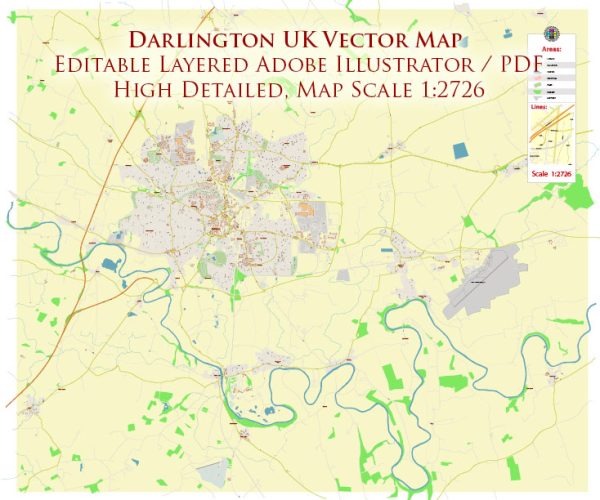Darlington is a historic market town located in the ceremonial county of County Durham, England. Its history of urban development is rich and diverse, with roots dating back to medieval times. Here is an overview of the history of urban development in Darlington:
- Medieval Period (c. 1183): Darlington’s origins can be traced back to the medieval period when the town was established as a market town around 1183 by Bishop Hugh Pudsey of Durham. The market charter granted by the bishop allowed for the development of a market square, which became a focal point for economic and social activities.
- Civil War Era (17th Century): Darlington played a role in the English Civil War during the 17th century. The town was strategically located between the Royalist stronghold of Newcastle and the Parliamentarian stronghold of Hull. As a result, it witnessed military activity and suffered damage during this turbulent period.
- Industrial Revolution (18th Century): Like many other towns in the region, Darlington experienced significant growth and transformation during the Industrial Revolution. The opening of the Stockton and Darlington Railway in 1825, the world’s first public railway, had a profound impact on the town’s development. Darlington became a key railway hub, fostering economic growth and industrialization.
- Victorian Era (19th Century): The Victorian era saw further urban expansion and development. The town’s population increased, and new industries, including engineering and manufacturing, flourished. The railway continued to be a major contributor to Darlington’s prosperity.
- Architectural Heritage: Darlington boasts a variety of architectural styles reflecting different periods of its history. The Victorian and Edwardian periods, in particular, left a significant imprint on the town’s architecture. The Market Square, clock tower, and various Victorian buildings contribute to Darlington’s distinctive character.
- Transportation Hub: Darlington’s strategic location as a transportation hub continued to be crucial in the 20th century. The town remained a center for railway activities, and road infrastructure further enhanced its connectivity.
- Post-War Era and Contemporary Development: Like many industrial towns, Darlington faced challenges in the post-war era as traditional industries declined. However, efforts to diversify the economy and revitalize the town have led to the development of new businesses and infrastructure projects. Modern urban planning has aimed to balance preservation of historical elements with the need for contemporary amenities.
In summary, Darlington’s history of urban development is intertwined with its role as a market town, its significance during the Industrial Revolution, and its continued importance as a transportation hub. The town’s architecture and layout bear witness to its rich history, making Darlington a place of historical and cultural interest.


 Author: Kirill Shrayber, Ph.D.
Author: Kirill Shrayber, Ph.D.